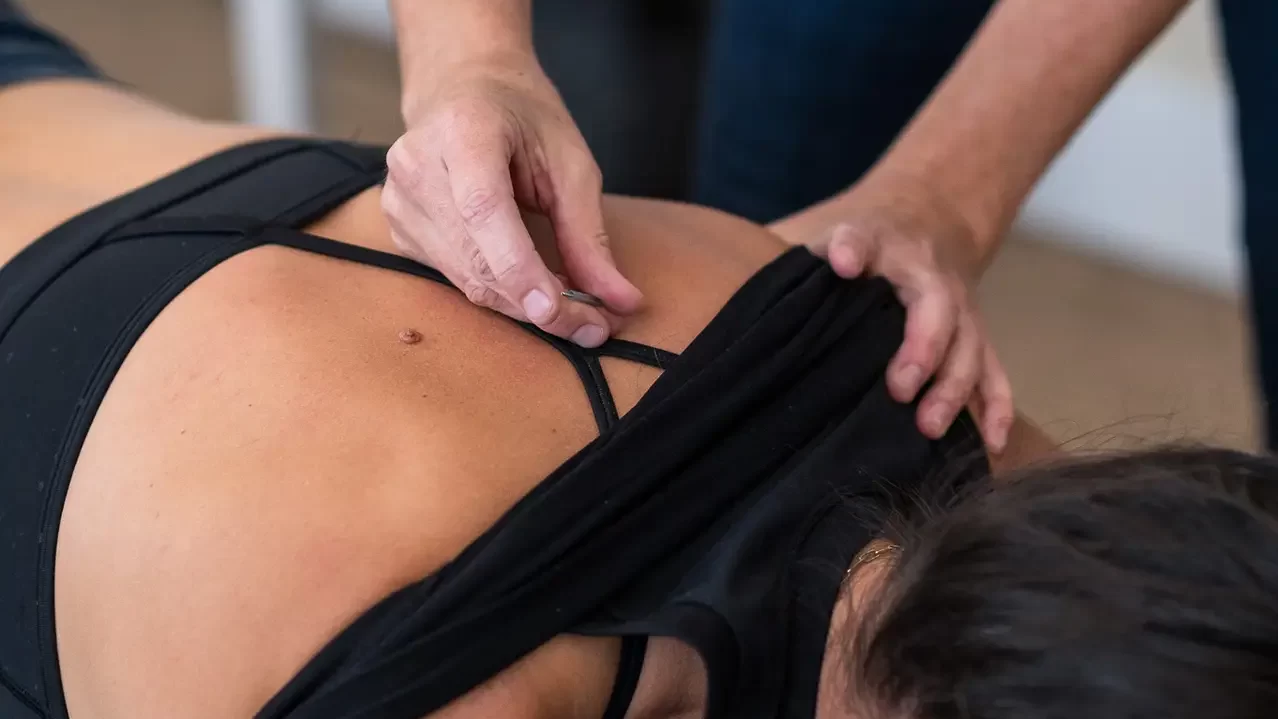
When it comes to relieving muscle tension and reducing pain, the benefits of dry needling are hard to overlook. Dry needling is a therapeutic treatment that involves inserting thin needles into specific points within muscles, known as myofascial trigger points. Trigger points, or muscle knots, can be painful and limit mobility. Dry needling works to alleviate pain and loosen the tight muscles.
How Does Dry Needling Work?
When a needle is inserted into a trigger point, it stimulates the muscle, causing it to contract or twitch. This response can help release muscle tension, increase blood flow, and reduce pain.
It’s called “dry” needling because the needles are solid and contain no medication, so nothing is injected into the body.
Benefits of Dry Needling
Dry needling provides several key benefits, including:
- Pain Reduction: Targeting trigger points can decrease local and referred pain.
- Muscle Release: Reduces muscle stiffness and tension.
- Improved Range of Motion: Releasing muscle tightness can enhance flexibility and movement.
- Increased circulation: Better circulation means your muscles receive the oxygen and nutrients they need to heal.
Dry Needling vs. Acupuncture
The two treatments are similar in that they both involve inserting needles into the body, however they differ in their underlying philosophies and applications.
- Dry Needling: Based on Western medical principles, dry needling focuses specifically on relieving musculoskeletal pain and dysfunction by targeting myofascial trigger points.
- Acupuncture: Rooted in traditional Chinese medicine, acupuncture aims to balance the body’s energy flow (Qi) by targeting specific points along meridians. It’s used to treat a wide range of conditions beyond musculoskeletal issues.
Precautions and Considerations
Qualified healthcare professionals are the only ones who should perform dry needling. It is generally considered safe, however some people may experience minor bleeding, bruising, or temporary soreness.
Dr. Nichole Freeman, here at Fusion Chiropractic and Wellness, is very gentle in her technique and strives for her patients to not feel it all. She uses dry needling in conjunction with her chiropractic treatments to loosen tight muscles so that adjustments are easier and last long
Are you ready to try dry needling?!
If you’re experiencing persistent muscle pain or movement limitations, contact us to determine if dry needling could be a beneficial addition to your treatment plan. Always ensure that any procedure is performed by a trained and licensed professional to maximize safety and effectiveness.
About the Author: Brittany Ferrer is a Nutrition Therapist with a passion for holistic health. She believes in the healing power of herbs and loves foraging for and making her own herbal remedies. Connect with her on Instagram!
References
- Dunning, J., Butts, R., Mourad, F., Young, I., Flannagan, S., Perreault, T., & Fernández-de-Las-Peñas, C. (2014). Dry needling: A literature review with implications for clinical practice guidelines. Journal of Orthopaedic & Sports Physical Therapy, 44(9), 725-737. https://doi.org/10.2519/jospt.2013.0505
- Cleveland Clinic. (n.d.). Dry needling. Retrieved from https://my.clevelandclinic.org/health/treatments/16542-dry-needling
- Imani, F., Rahimi, M., & Varrassi, G. (2022). Dry needling for myofascial trigger points: A literature review. Anesthesiology and Pain Medicine, 12(3), e9159711. https://doi.org/10.5812/aapm.9159711
- Prolete PT. (n.d.). 4 health benefits of dry needling. Retrieved from https://proletept.com/4-health-benefits-of-dry-needling/
- Kietrys, D. M., Palombaro, K. M., & Azzaretto, E. (2013). Effectiveness of dry needling for upper-quarter myofascial pain: A systematic review and meta-analysis. Journal of Orthopaedic & Sports Physical Therapy, 43(9), 620-634. https://pubmed.ncbi.nlm.nih.gov/26546163/
